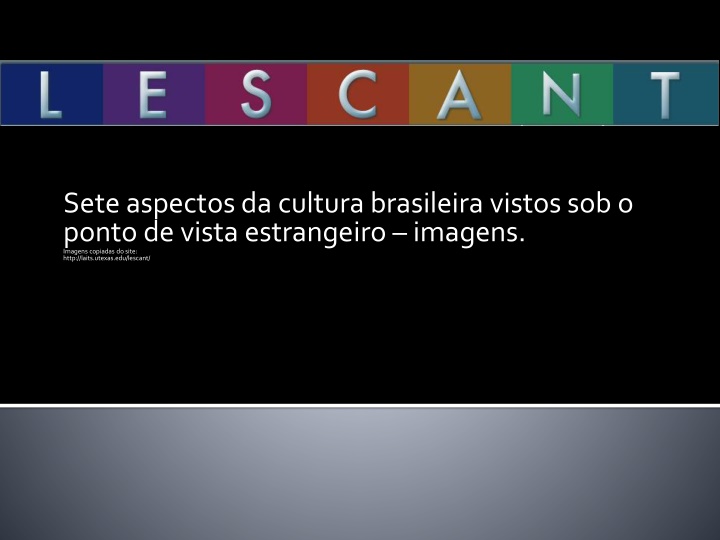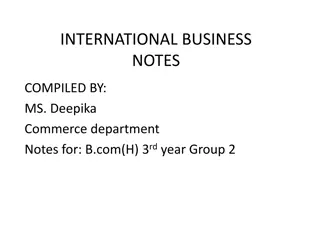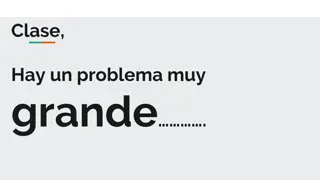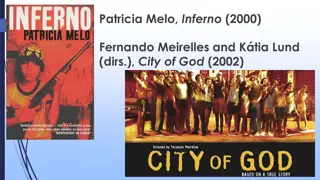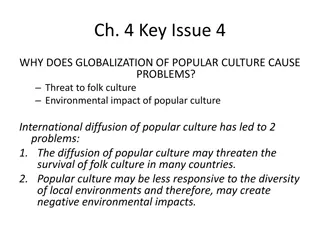Brazilian Culture Through Foreign Eyes
Explore key aspects of Brazilian culture through the eyes of foreign perspectives, as analyzed through the LESCANT model. Delve into language nuances, social organization, dealing with authority, and more, all vital for intercultural communication and understanding.
Download Presentation

Please find below an Image/Link to download the presentation.
The content on the website is provided AS IS for your information and personal use only. It may not be sold, licensed, or shared on other websites without obtaining consent from the author.If you encounter any issues during the download, it is possible that the publisher has removed the file from their server.
You are allowed to download the files provided on this website for personal or commercial use, subject to the condition that they are used lawfully. All files are the property of their respective owners.
The content on the website is provided AS IS for your information and personal use only. It may not be sold, licensed, or shared on other websites without obtaining consent from the author.
E N D
Presentation Transcript
Sete aspectos da cultura brasileira vistos sob o ponto de vista estrangeiro imagens. Imagens copiadas do site: http://laits.utexas.edu/lescant/
David Victor: professor da Universidade da Calif rnia, em San Diego, EUA. Origens do modelo LESCANT de an lise de diferen as culturais: criado para treinar alunos em escolas de neg cios norte- americanas que precisam se relacionar com clientes em outros pa ses. Internationalbusiness communication course.
Basicamente, os alunos examinam o papel de sete fatores centrais que contribuem para diferen as culturais que costumam surgir nas rela es de trabalho. Esses sete fatores s o resumidos em modelo chamado LESCANT.
Language Enviromentandtechnologyconception Social organizationframe ofreference Contextingandface saving Authorityconception Non-verbal behaviour Time perception
Que aspectos da lngua e suas codificaes que podem causar estranhamento para o aprendiz?
Como se pode controlar acomodar ou agir em harmonia com os outros?
Como a organizao social em sua cultura? Vis o de educa o, fam lia, g nero, institui es...
Na sua lngua, voc precisa explicar tudo em detalhes ou pode confiar que seu interlocutor compreenda o que quer dizer sem que haja necessidade de muitas palavras? Como voc age quando ofende o outro? Que palavras s o ofensivas? Por qu ?
Como voc lida com a autoridade? Como voc lida com os limites entre p blico e privado? Como voc lida com as institui es?
Qual a importncia dos traos no-verbais na sua comunica o? Rir, sorrir, chorar apropriado demonstrar sentimentos? Quando, quanto, como, com quem? O que significam para voc os gestos com as m os? Com o rosto? Com os olhos? Com a boca? educado olhar nos olhos?
Como voc percebe o tempo? O que um atraso? Quem pode atrasar? Quanto tempo preciso para... Almo ar? Fazer uma reuni o? Fazer uma festa?
Language Imagens copiadas do site: http://laits.utexas.edu/lescant/
Contributor:Orlando R Kelm Country: Brazil City: Salvador This sign is only humorous is you speak Portuguese. In Portuguese the "h" is silent, so it is hard to know when words are spelled with an "h". So here "errar humano" is really funny because the phrase means "to err is human" but the phrase itself has the spelling errors in it. I took this picture at a corner restaurant in Salvador near the Largo do Campo Grande.
Contributor:Orlando R Kelm Country: Brazil City: Maric This restaurant is at the main square in Maric , just outside of Rio de Janeiro. It's a great example of the use of English, without actually correctly using English. Lanches in Portuguese is the word (already from English) that is used for snacks. Here the "Let's" in front of it is interesting because in English we would never you "let's" with a noun.
Contributor:Orlando R Kelm Country: Brazil City: Salvador Imagine a brand name for napkins in English called "snob", it's just not going to happen. I took a picture of this in Salvador. I saw it in the store and bought it just to have a chance to take it home! A perfect example of language where words have a different connotation.
Enviroment Imagens copiadas do site: http://laits.utexas.edu/lescant/
Contributor:Orlando R Kelm Country: Brazil City: Rio de Janeiro I took this picture in the bathroom of a company in Rio de Janeiro. Imagine that, a machine that dispenses dental floss! I was interested in how societies have different priorities for hygiene. I can't honestly say that I have ever seen a similar device in the United States. Ironically, soap and hot water are more difficult to find in Brazil.
Contributor:Orlando R Kelm Country: Brazil City: So Paulo Instead of the typical American yard, Brazilian houses are more "locked up". This picture shows the gate and lock where the care parks. Part of this is because of the population, part of it is because of the fear of theft. This was taken in S o Paulo near the American Chamber of Commerce.
Contributor:Gregory AndersenCountry: Brazil City: So Paulo Brazilian crane working on infill development.
Contributor:Orlando R Kelm Country: Brazil City: Rio de Janeiro I took this picture in the bathroom of a company in Rio de Janeiro. Imagine that, a machine that dispenses dental floss! I was interested in how societies have different priorities for hygiene. I can't honestly say that I have ever seen a similar device in the United States. Ironically, soap and hot water are more difficult to find in Brazil.
Contributor:Orlando R Kelm Country: Brazil City: So Paulo Instead of the typical American yard, Brazilian houses are more "locked up". This picture shows the gate and lock where the care parks. Part of this is because of the population, part of it is because of the fear of theft. This was taken in S o Paulo near the American Chamber of Commerce.
Contributor:Gregory AndersenCountry: Brazil City: So Paulo Brazilian crane working on infill development.
Social organization Imagens copiadas do site: http://laits.utexas.edu/lescant/
Brazilians seem to pay a lot of attention to those who have special needs. Here's a supermarket in Ipanema that has a special line for the elderly, disabled, pregnant, or those with small children.
Speaking of how society is put together, capoeira gives people a way to be part of a group, so much so that there are tons of community projects where youth are encouraged to learn capoeira. There is nothing like a little "ginga" to get you in the mood for capoeira.
Context Imagens copiadas do site: http://laits.utexas.edu/lescant/
A nice example of high context communication. Instead of saying "Only use two sheets", the sign's subtle message is the "two sheets suavely dry your hands" This photo was taken at a restaurant in Prazeres.
Authority Imagens copiadas do site: http://laits.utexas.edu/lescant/
Antonio, one of the guards at our apartment. The role of guards is to keep track of who enters the apartment building. Beyond security, they are also a great source for local information. As to authority, they control the flow of people in the complex. This shot was taken at the entrance to my apartment in Barra.
Non verbal Imagens copiadas do site: http://laits.utexas.edu/lescant/
Time Imagens copiadas do site: http://laits.utexas.edu/lescant/
Life just works at a different pace in Salvador. Here my wife is taking a little nap, something that is impossible to resist when the "rede" (hammock) starts calling for you!
